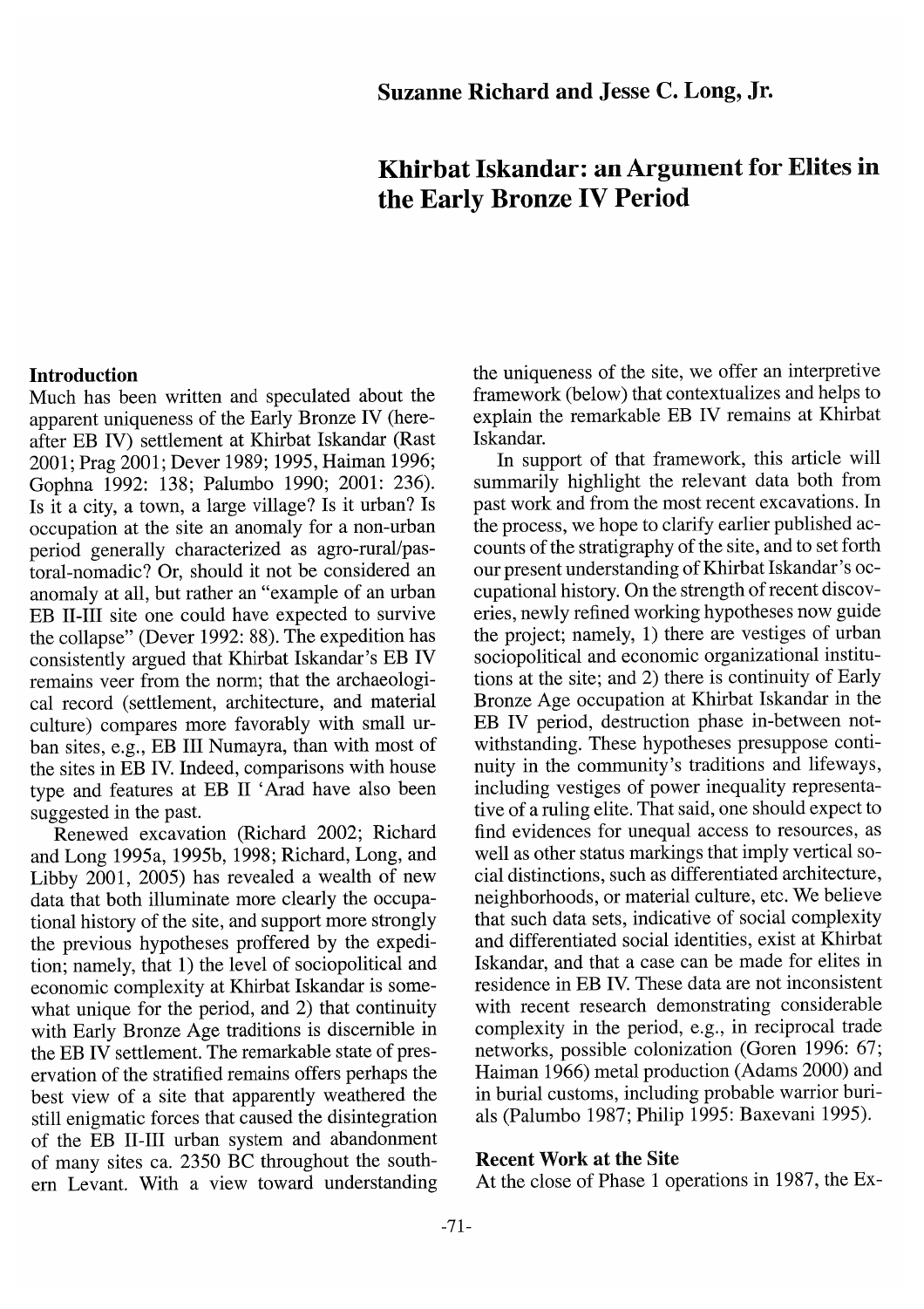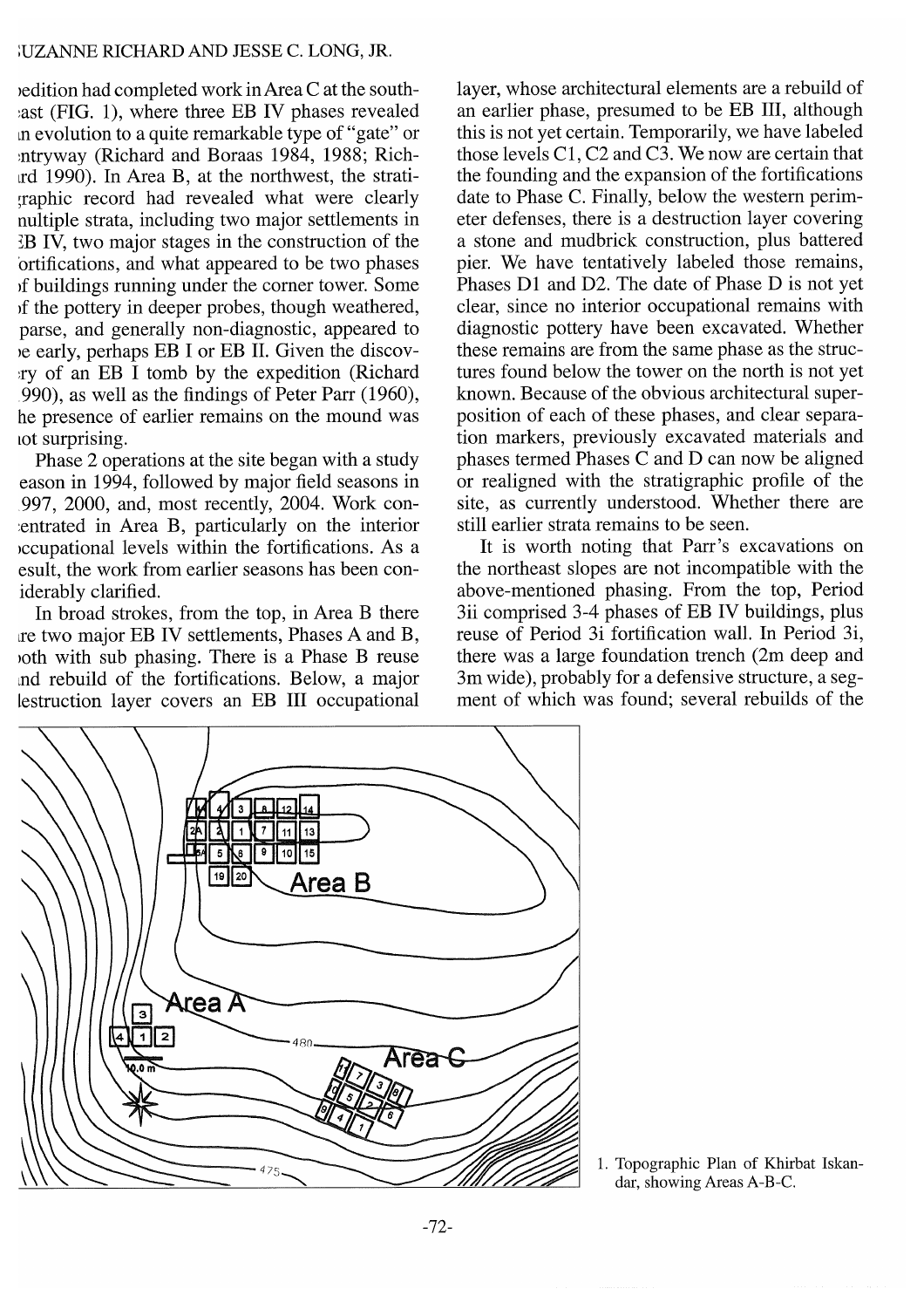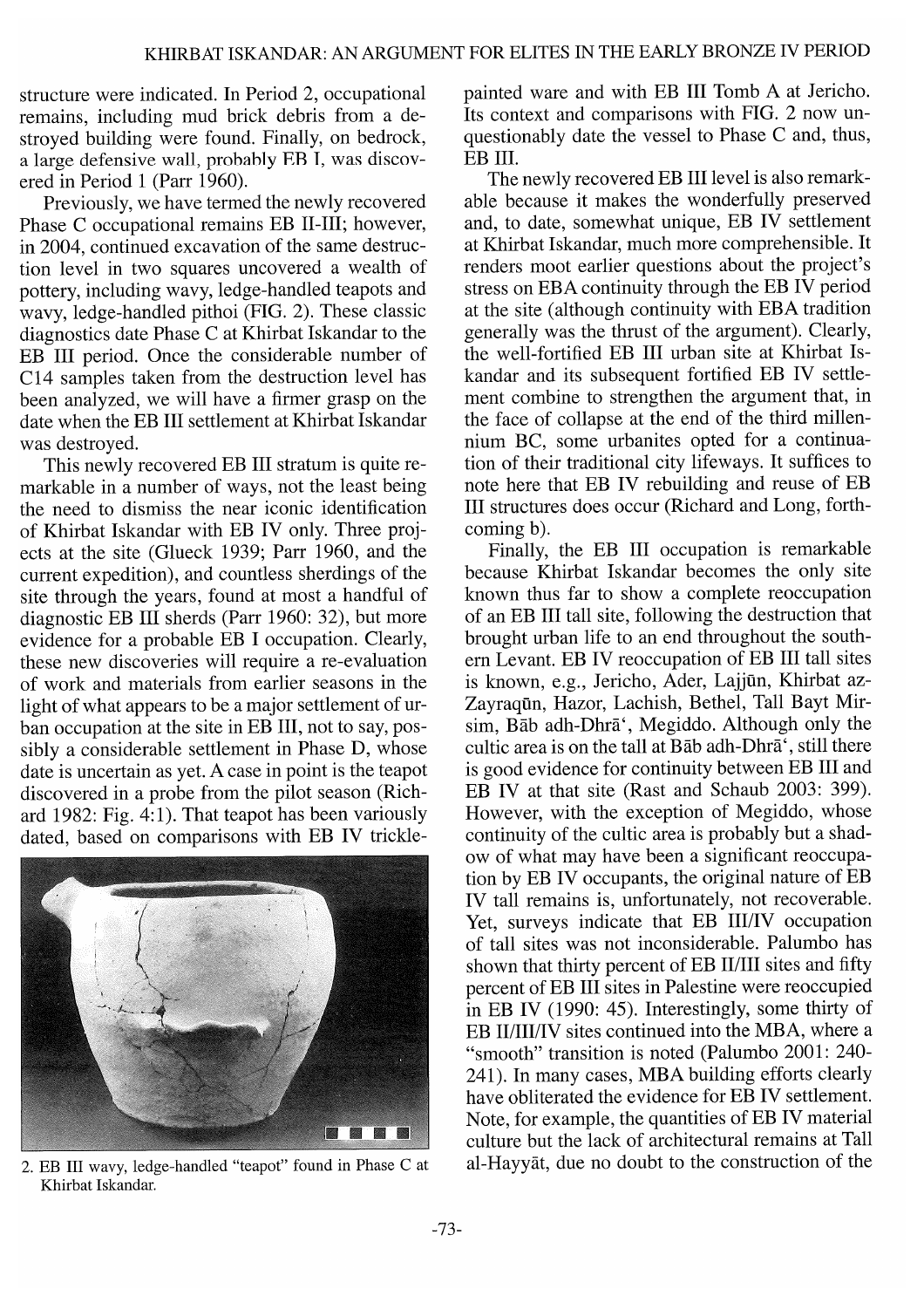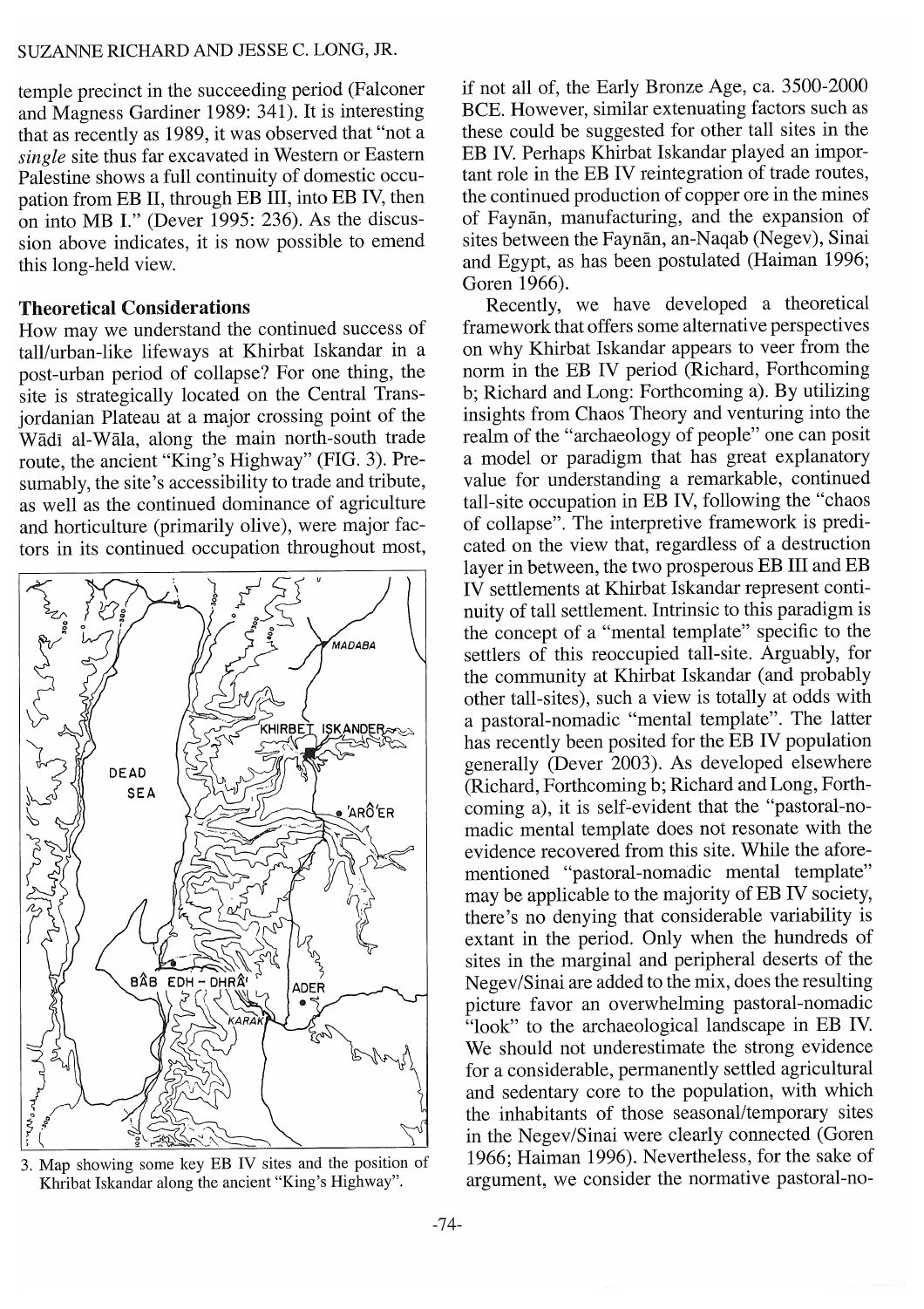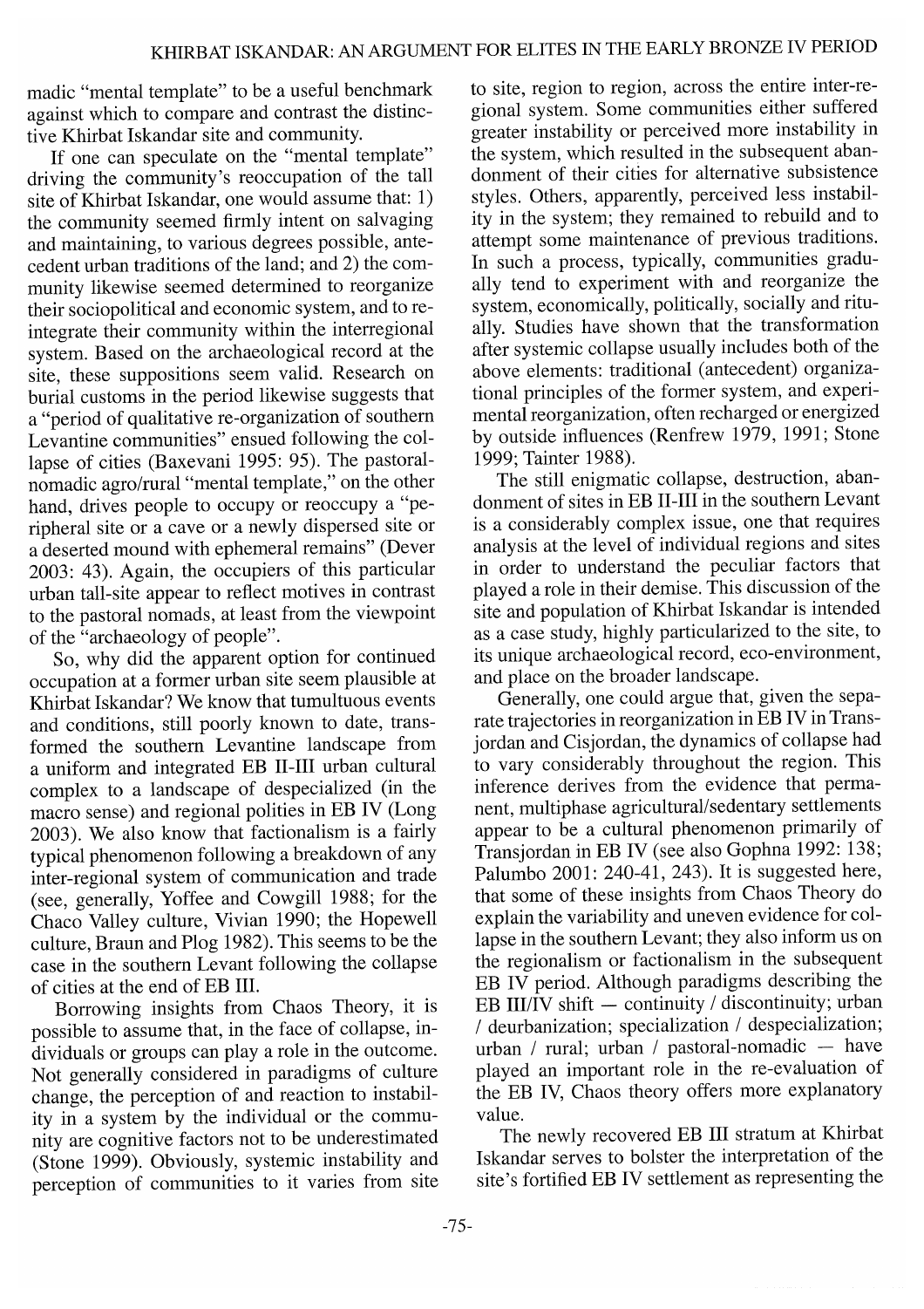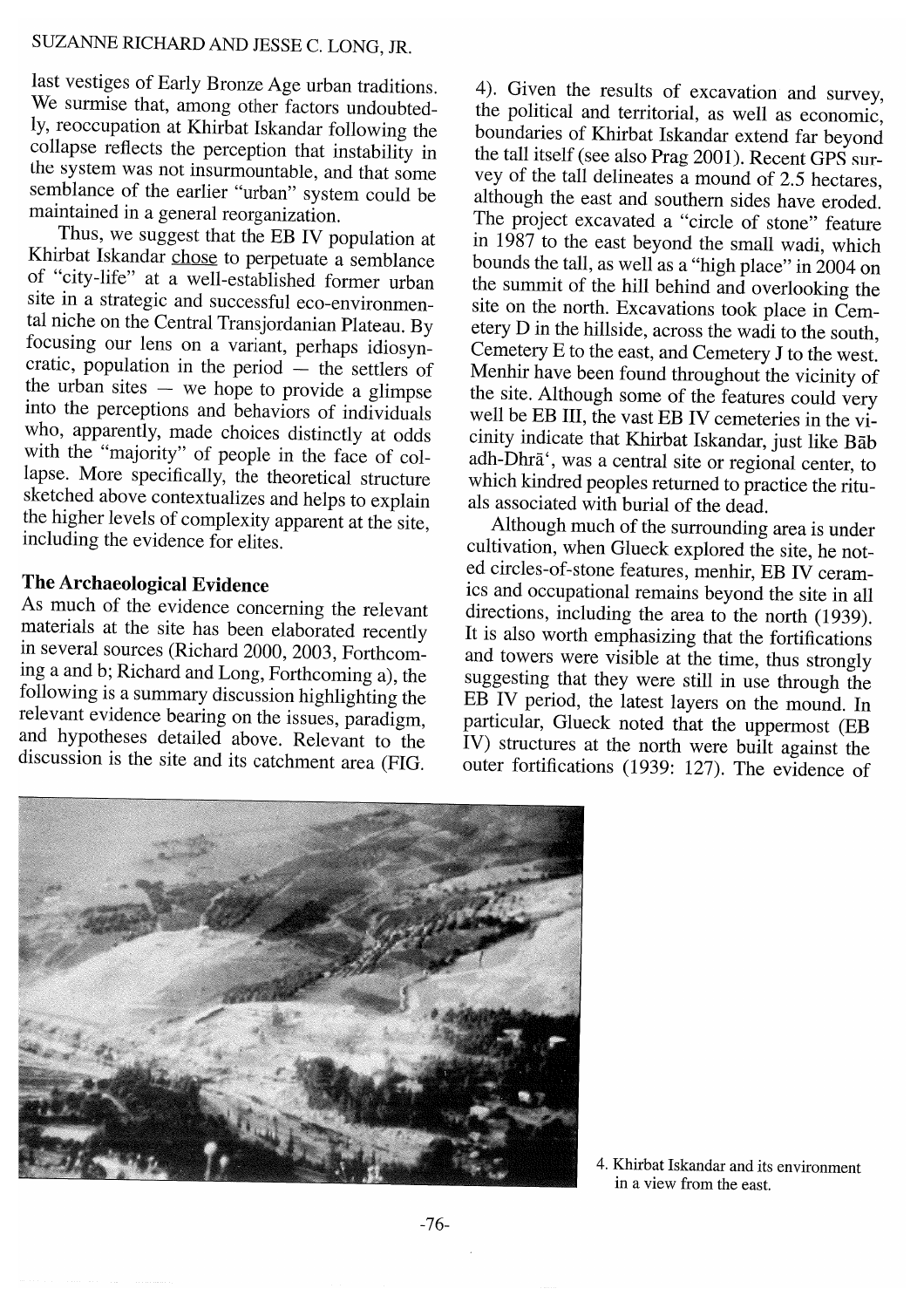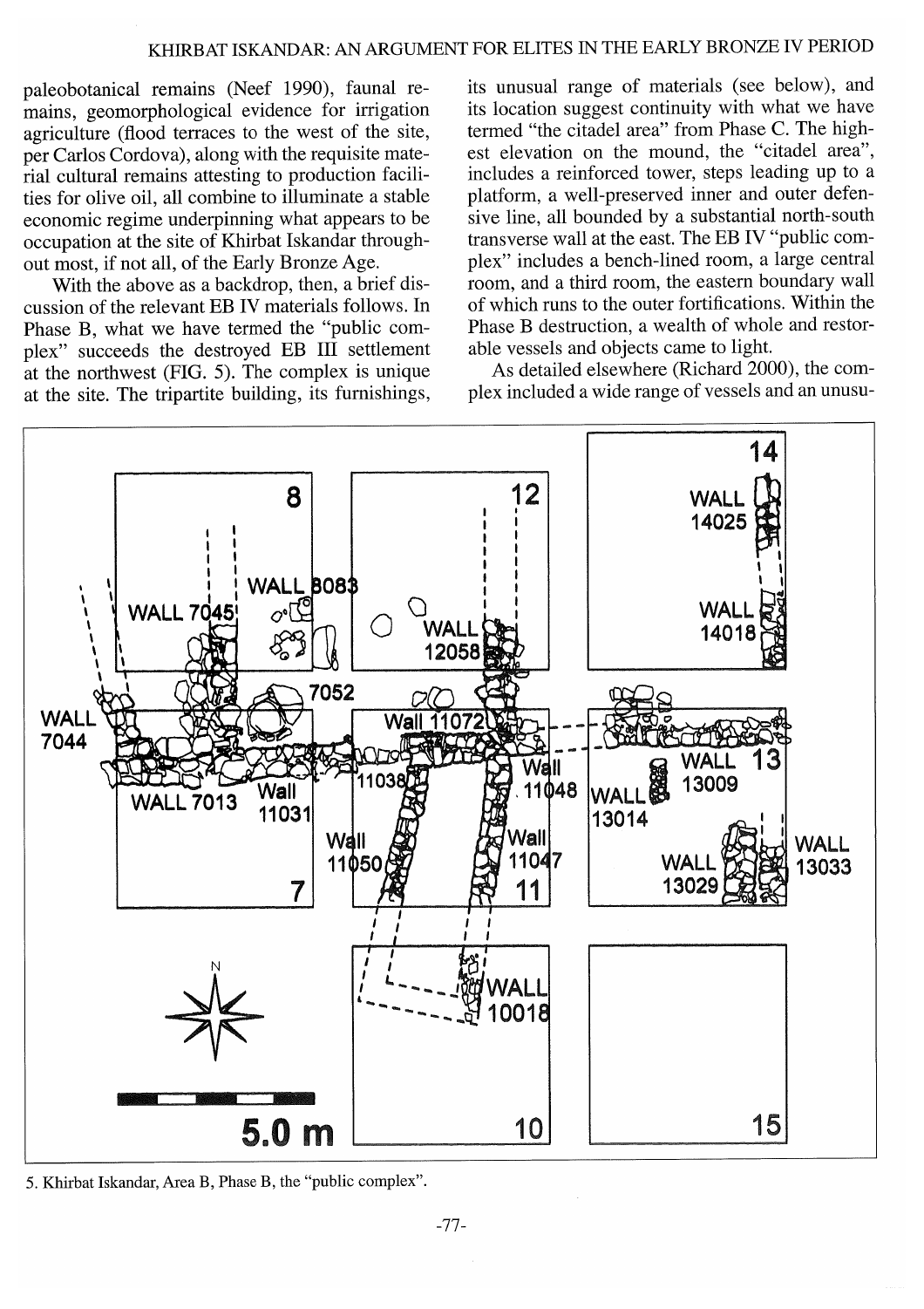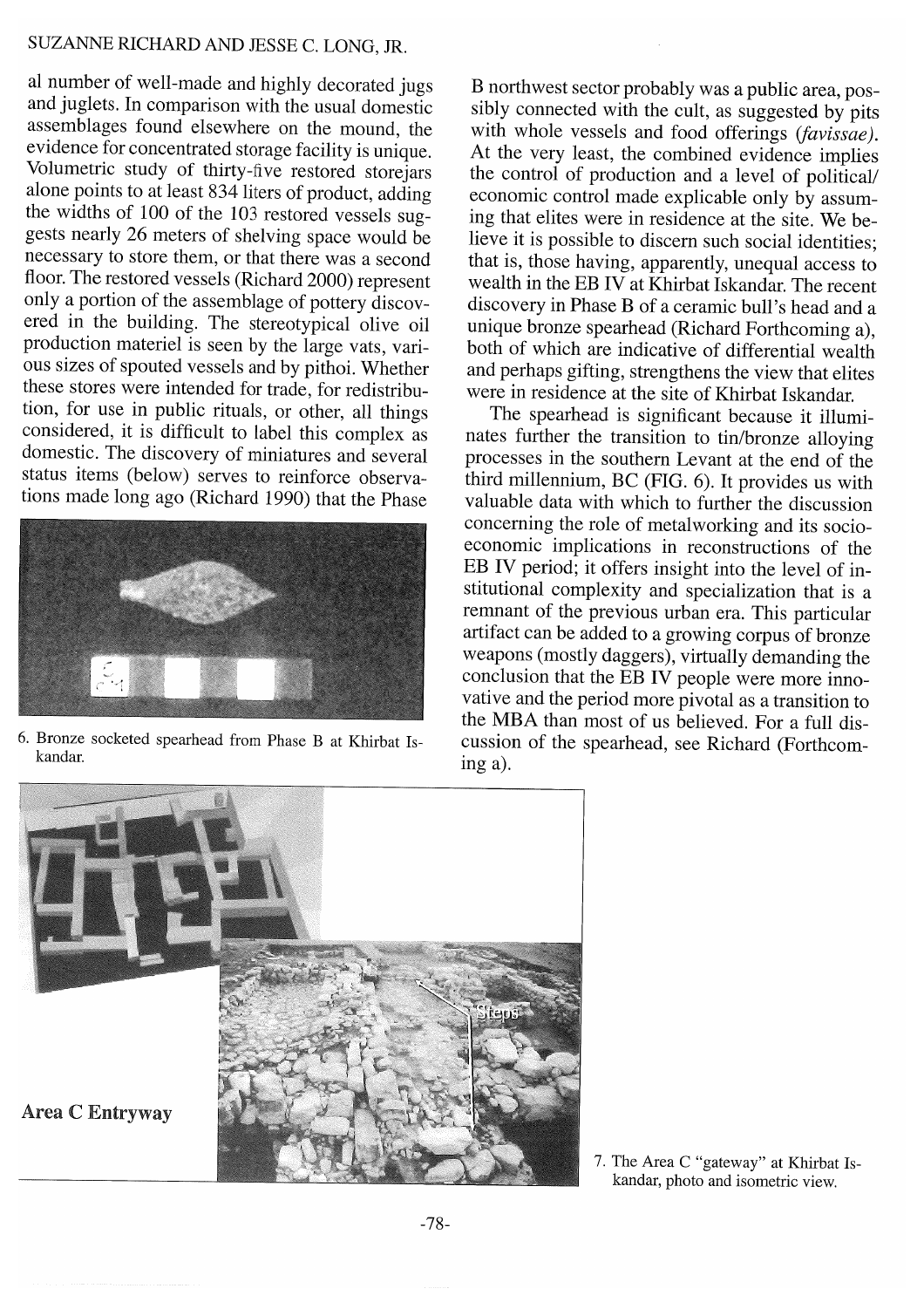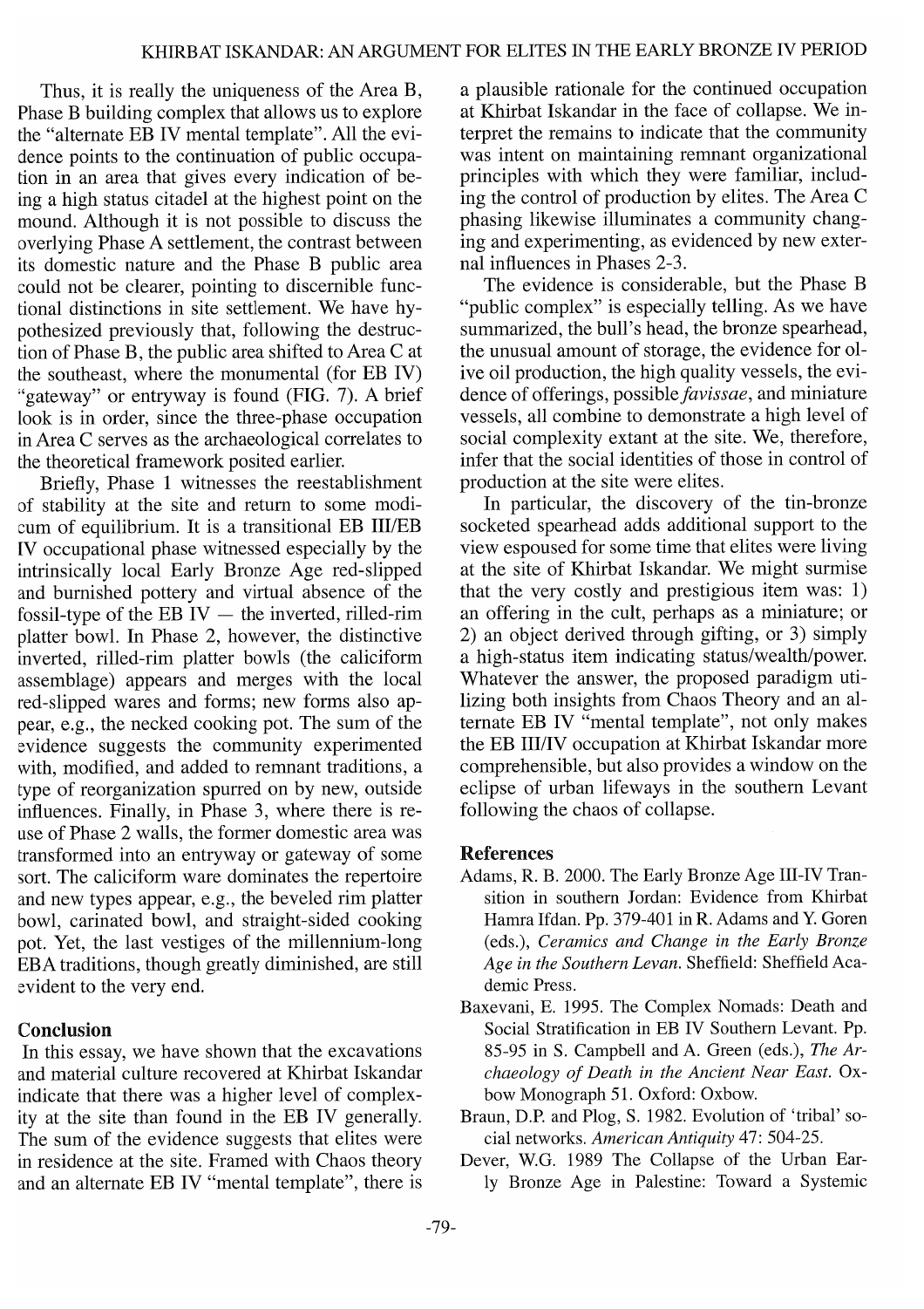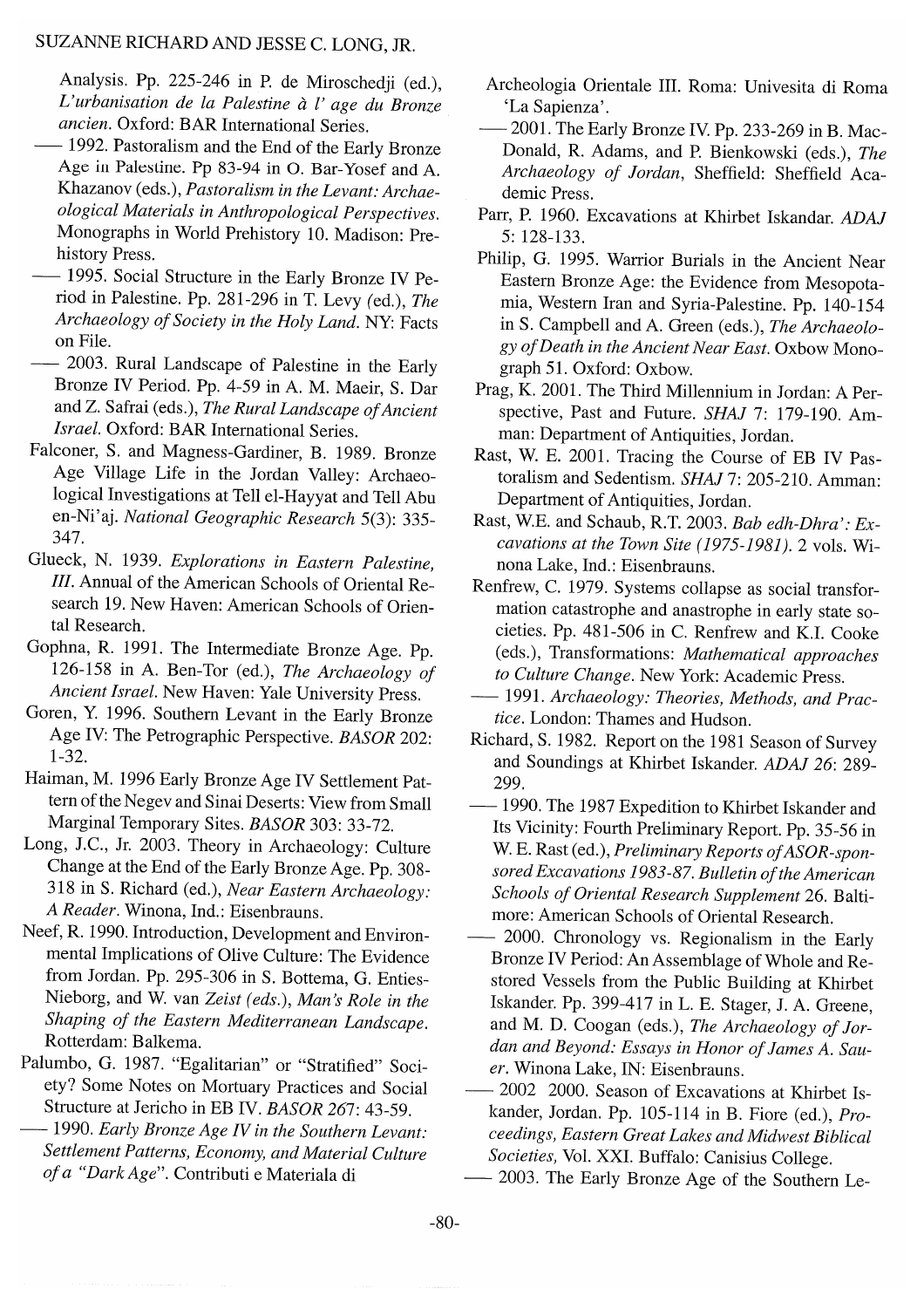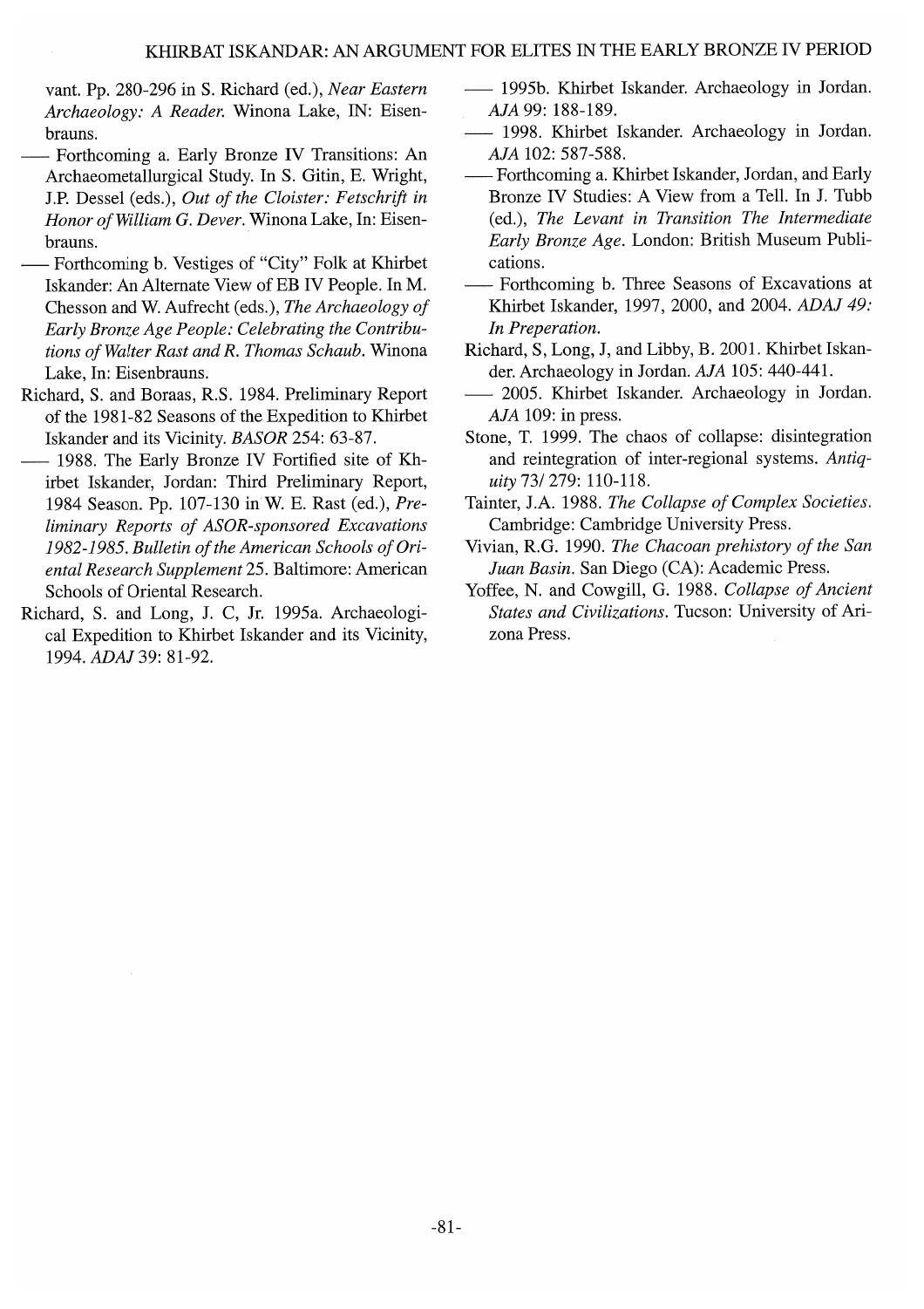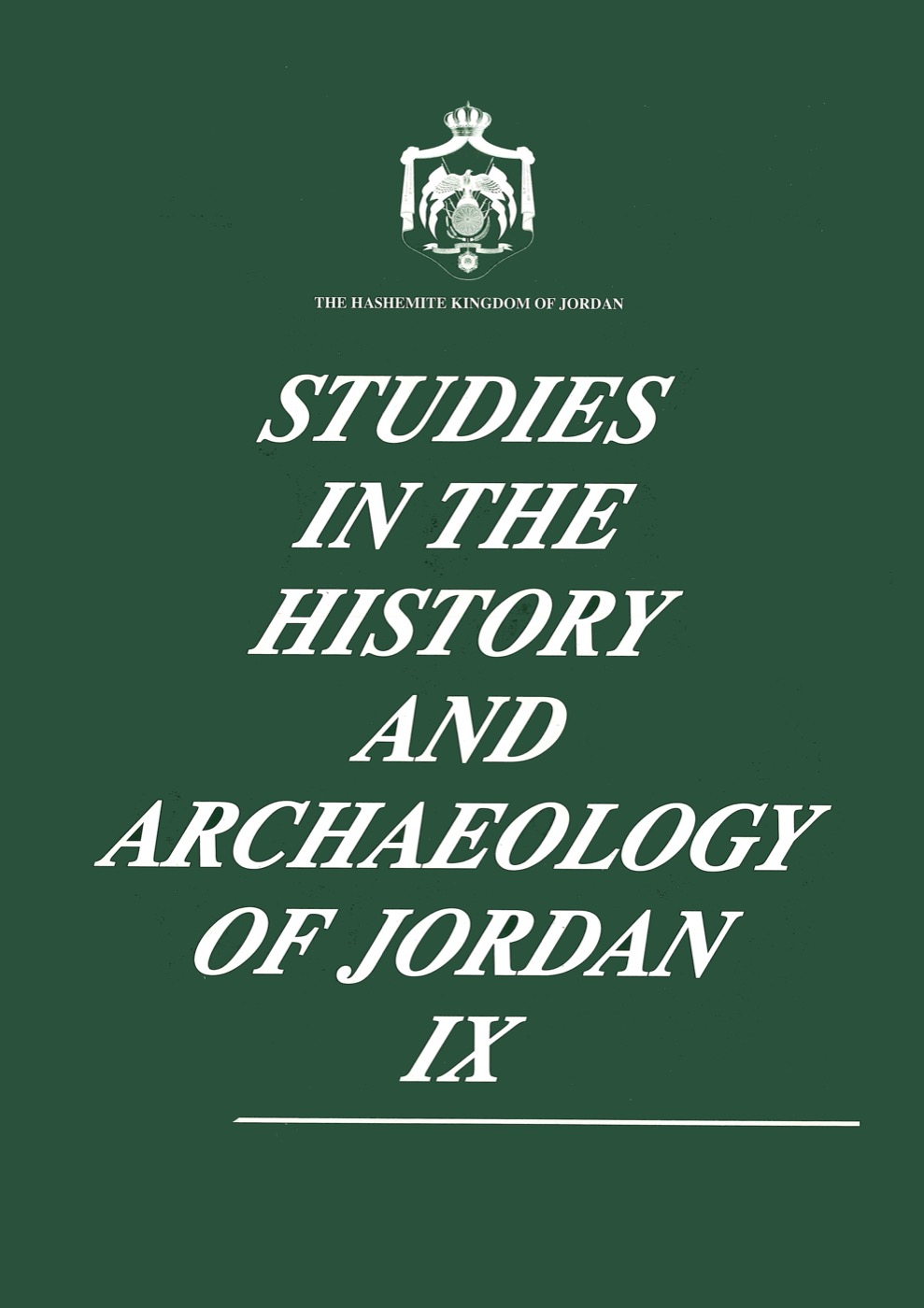Khirbat Iskander: An Argument for Elites in the Early Bronze IV Period
pp. 71-82 ( 12 Pages)
Published: 2007
Pages: (572)
Table of Contents
Gerasa as Provider from Roman Frontier Stations: A View Seen from Late Roman Potteries' Waste at the Hippodrome and the Upper Zeus Temple Rural Settlement on the Karak Plateau: Khirbar Fāris Camel Petroglyphs in the Wadi Nasib and their Implications for the Use of Camels in the Late Bronze Age Trade and the Acquistion of Wealth in Rural Late Antique North Jordan Khirbat Iskander: An Argument for Elites in the Early Bronze IV Period A list of the Ammonite Kings According to Cultural and Political Interactions The Jordanian Countryside as a Corrding for Population Movement and Trade Notes on the old water system and the integrated of Jordan future Cultural Interaction through the Windows of the Four- Room House at Tall al-'Umayī A Large Urban Residence from Late Byzantine and Early Islamic Mādabā Craft Production and Landscape at the Early Bronze Age Settlement at al-Lajjūn, Jordan Irrigation System at Dayr 'Allā Terrace Cultivation in the Jabal Hārūn Area and its Relationship to the City of Petra in Southern Jordan An Eastrn Jordan Perspective on The Lower Paleolithic of the "Levantine Corridor" Nabataean Water Supply Systems: Appropriateness, Design, and Evolution The Hellenic Archaeological Project of the University of Ioannina in Jordan: a Preliminary Synthesis of the Excavation Results at Ghawar Aṣ-Ṣāfī and Tall al-Kafrayn (2000-2004) Woodworking Implements from Neolithic 'Ayn Ghazāl: Tools of Change Nabataean Funerary Complexes: their Relation with the Luxury Architecture of the Hellenistic and Roman Mediterranean Echos From Mt. Parnassos Representations of Muses in the Decapolis The Hellenistic Period in the Dhībān Plateau: a Quantitative Analysis The Impact of Long- Distance Trade on the Pastoral Nomadic Populations of Southern Jordan and Northwestern Arabia During the Iron Age Mud Brick Town Walls in the EBI-II Southern Levant and their Significance for Understanding the Formation of new Social Institutions The Politics of Land Management in Medieval Islam: The Northern Jordan Survey, 2004 The Umayyad Minaret at al-Qasṭal and its Significance Variation in Late Iron Age Ceramic Assemblages in Southern Jordan: Edomite Pottery Reconsidered Great and Little Traditions: A Framework for Studying Cultural Interaction through the Ages in Jordan Land uses and their Effect on the Demography of Region: a Study of Three Different Areas in the South of Jordan Ash-Shawbak, Uthruḥ and Bīr Abū Danna The Social-Cultural Impact of Trade Relations: The Case of the Nabataeans Julian of Ascalon's Treatise and its Implications for Research and Conservation of Jordan's Archaeological Heritage The Hydraulic Infrastructure of Petra: a Model for Water Strategies in Arid Land Qaṣr al-Ḥallābāt Continuity and Change from the Roman-Byzantine to the Umayyad Period Al-Ḥumayma and the Abbasid Family Nabataean Water Management Systems in the Wādī ath-Thamad The Gaza-Damascus Roads in the Medieval Periods Observations on the Byzantine Church at Jabal Hārūn Petra, Jordan Late Bronze Age Settlement Patterns North of the az-Zarqāʿ River Production of Bronze Work in the Nabatean Kingdom Water Strategies in the Iktānū Region of Jordan Housing and Transport at the Origins of Nomadic Pastoralism Archaeological Evidence of Water Distribution and Quarrying Activity at Qaṣr al-Ḥallābāt Two-Humped Camel Drachms: Trajanic Propaganda or Reality? The Petra Great Temple's Strategy Investigating "Conder's Circle" ‘Ayn Jadīda near Mount Nebo The Wādī ar-Rayyān Archaeological Project (WRAP): Investigating the Chalcolithic Early Bronze Age Transition Sedentism and the Village: Social Motivations for the Beginning of Farming Water Stategies in the Southern Ghawrs and Northeast 'Araba The Water Supply Systems in the Region of Udhruḥ The 'Gadara Region Project' Archaeological and Archaeometric Investigations Wādī Al-Usaykhim:Strategies of use and of Valorisation of the Desertic Land of al-Bādiya through the Archaeological HeritageThumbnails
